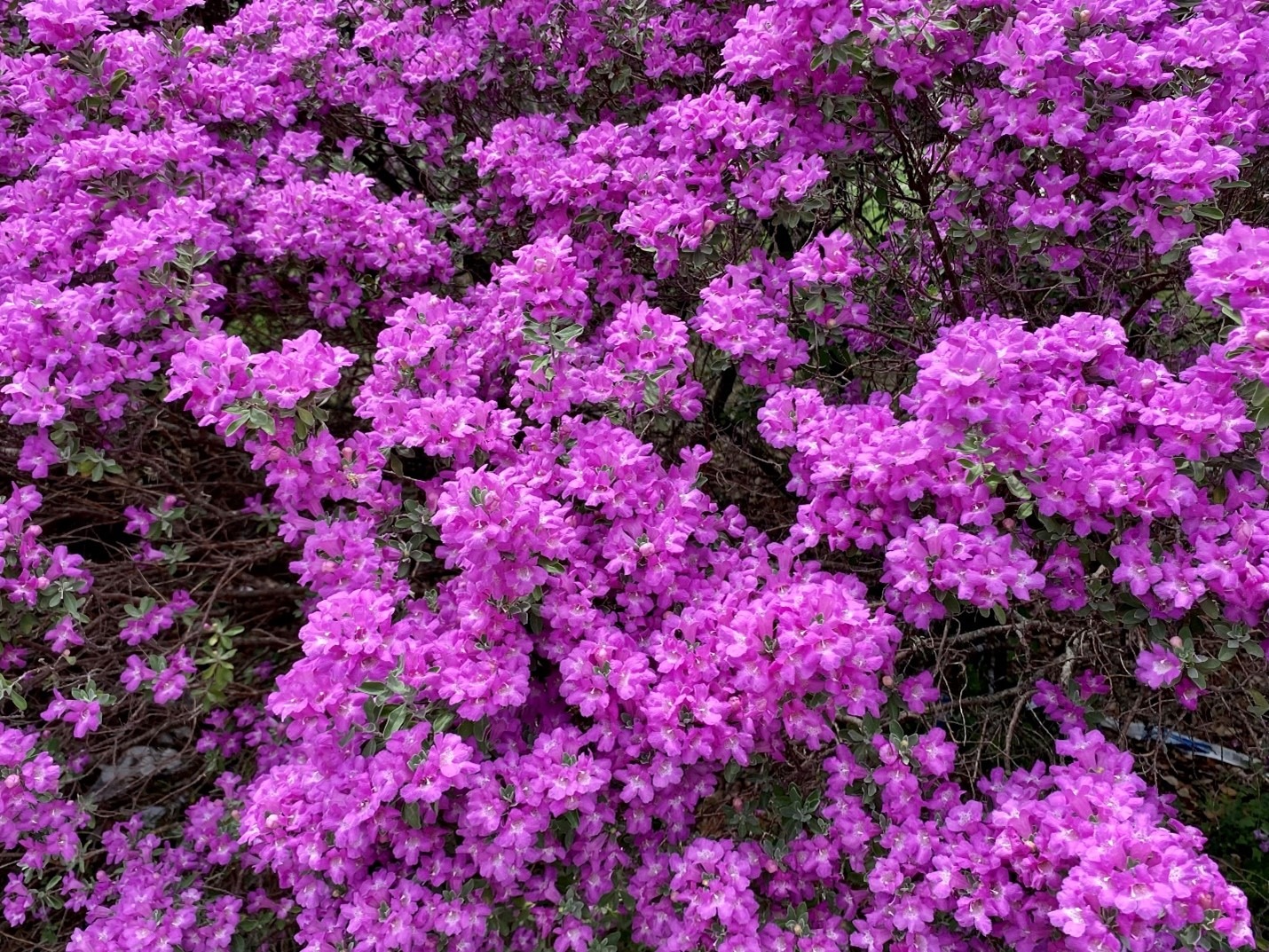Several little birdies told us just how tough — or not — our favorite drought-hardy plants really are.
Gusty winds and chilly temperatures didn’t deter thousands of green thumbs (and their people) from celebrating the start of gardening season at our recent Spring Bloom event.

Everyone was eager to shop for drought-hardy plants and glean expert gardening advice from local horticultural hotshots. But that’s not all they came for …
Guests were also enthusiastic to share their struggles and triumphs with their own landscapes in July, August and September 2023 — the hottest summer ever recorded in San Antonio.
Because of last year’s extreme heat (we had 72 days over 100 degrees), we wanted to know how their drought tolerant plants fared after that ultimate heat test.
The method. We gave them large posters showing 36 of our 40 WaterSaver landscaping plants (pdf), along with three stickers they could place on the photos: thrived, survived or died. There were 500 each of the three sticker choices:
Thrived: If their plant laughed off the heat and did great all summer.
Many people proclaimed that cenizo (Texas sage), flame acanthus, Pride of Barbados, Turk’s cap and yucca were indestructible and laughed at the heat, blooming in the midst of it. Others mentioned that Turk’s cap in sun did wilt in the afternoon oppressive heat but was a champion in the shade.
One gardener commented that cenizo, Pride of Barbados and esperanza were the “perfect summer trifecta.”
Survived: If their plant species made it through summer but didn’t always look its best.
Plants in the survivor category include any plant that had been reported dead at least once, which includes some classic summer superstars. Esperanza, for instance, only made it to the survivor category (based on stickers, there were two deaths for esperanza). None of us can know exactly what happened in these two cases, but from the number of thrived and survived stickers esperanza garnered, it’s a great choice for our Texas summers!
Likewise, someone reported their purple heart died. (Knowing the hardiness of purple heart, we wonder if other factors were at play.) Rosemary is another summer sun lover with at least one reported death. Age and freeze are the most common cause of death for rosemary.
Died: This one is self-explanatory.
For this shortest list, many people offered some explanations. Philodendron, for example, is a shade-tolerant plant but not a heat-loving one. If philodendron gets a wee bit too much sun and you add 100 degree-plus heat, it will not do well and death may occur.
 Similarly, Blackfoot daisy and most salvias (sage) are usually two of are hardiest native plants. So, how did they end up here? Blackfoot daisy loves hot, dry conditions, as seen in the rocky Hill Country natural areas. But thin, rocky soil is also where they thrive. If you have deeper soil and water your landscape bed, you may be sealing Blackfoot daisy’s fate. The same can be said for silver ponyfoot. An equal number of people claimed it was stellar but reported it croaked.
Similarly, Blackfoot daisy and most salvias (sage) are usually two of are hardiest native plants. So, how did they end up here? Blackfoot daisy loves hot, dry conditions, as seen in the rocky Hill Country natural areas. But thin, rocky soil is also where they thrive. If you have deeper soil and water your landscape bed, you may be sealing Blackfoot daisy’s fate. The same can be said for silver ponyfoot. An equal number of people claimed it was stellar but reported it croaked.
Salvias make up a huge group of flowering plants. When we lump such a large number of species into this one family, differences in survival rates are bound to follow. Certain salvias are more successful in our summer heat and others are not. Best suggestion? Choose a species that’s native to our area and has historically survived our droughts and summer heat. My favorite, ‘Henry Duelberg’s’ mealy blue sage (Salvia farinacea ‘Henry Duelberg) is found throughout our natural areas and beautiful Hill Country with no one tending to them but Mother Nature herself.
By the end of our informal survey, all the ‘thrived’ and ‘survived’ stickers had been used. Only half of the ‘died’ stickers were used, leaving 225 left unused. That means many more plants survived and triumphed than died in summer 2023.
Thanks to all the willing participants for sharing their gardening experiences with us for this survey! More than 600 guests contributed their observations. These results were encouraging — way to go, WaterSaver plants!
Here are the results.
Thrivers: |
Survivors: |
Died |
|---|---|---|
|
|
(there were also survivor
|





